Change is the essence of life, yet a person occasionally finds some ancient implement so well conceived that it defies time and progress. Among such rarities is the snowshoe, an aid to winter travel that dates back to antiquity.
Snowshoes are devices attached to the feet that enable a wearer to walk on snow. In recent times, snowshoes have come out of the backwoods and into the spotlight, as people of all ages discover their versatility, aerobic value and the fact that snowshoeing is just plain fun.
History
Snowshoes were in use throughout northern Europe and parts of Asia 6,000 years ago, but the actual time of “invention” may have occurred much earlier. Being constructed of plant and animal material, no ancient snowshoe artifacts remain for positive dating. Snowshoes may have found their way to America via the Being Strait Land Bridge.
To ancient peoples of the northern latitudes, the snowshoe was serious business because hunting and trapping depended on them. This dependence is still true today among persons who hunt or trap for a living.
By making the northern regions more accessible to human occupation, the snowshoe contributed significantly to cultural development. By allowing greater contact among peoples, snowshoes encouraged an exchange of ideas, thereby contributing to the complexity of northern cultures.
Some surviving snowshoes of the North, made by modern-day aborigines, are a delight to inspect because of the fine weaving together of delicate patterns in the webbing, which patterns are almost transparent, giving a bright glow to the snowshoe. Years ago, such snowshoes, which are really works of art, could be seen hanging on the wall in offices of the Hudson Bay Company.
During the westward expansion of this country, snowshoes were as indispensable as the axe and flintlock rifle. Traders, hunters, explorers, and surveyors all depended upon the snowshoe to carry out their work.
The sport of snowshoeing was a social mainstay of winter recreation in this country up until the 1930s, when Alpine skiing’s glamour and speed made the sport passé. Outdoor clubs often organized group snowshoeing “tramps” for men and women.
In the 1970s, snowshoeing experienced a resurgence after the Sherpa Snowshoe Company introduced a compact synthetic snowshoe, which forever changed the snowshoe’s scope of usefulness. Wearers could now leave flatlands behind to climb in mountainous areas.
Purchasing Snowshoes
The essential parts of a snowshoe are a solid decking that “floats” a person on snow, a lightweight frame, and teeth to provide grip on both ice and snow. Categories of snowshoe buyers include fitness-minded individuals who use snowshoes for winter workouts, hiking/mountaineering enthusiasts, and recreational users who can be coaxed outdoors for a stroll.
When selecting a snowshoe, keep in mind the kind of topography you intend to traverse, the condition of the snow you will be walking over, and the object of your winter wanderings. If the land is rough or the woods thick, you need a short, broad ‘shoe; if it is open and smooth, a long, narrow snowshoe works better. When snow is light and soft, you will need a larger size than when it is hard and dry. When a day’s outing requires considerable turning, you will find a short snowshoe to be your best choice.
There is a popular misconception that it is difficult to walk with snowshoes. Supposedly, snowshoes drag heavily on the feet and make a person straddle the legs awkwardly to keep the ‘shoes from banging into one another. On the contrary, weight of the snowshoes is scarcely felt—they are not lifted clear off the ground when walking. The toe only is raised to clear the surface of the snow.
The walking action has nothing of a straddle in it either, since the snowshoe that is raised passes over, not around, the other one. Even on a hard-packed trail, where snowshoes aren’t needed to keep a person from sinking into snow, it as easy to walk with snowshoes as without them. Do keep in mind, however, that although snowshoes are designed to keep a person on top of the snow, they are not magical. Depending on your weight, you will most likely sink somewhat—generally about eight inches if you’re in waist-deep, newly fallen snow.
Where to Snowshoe
A great thing about snowshoeing in Michigan is that you’ll never run out of places to do it. Just about anywhere you can hike or mountain bike in summer, you can snowshoe in winter. The state parks, national forests and privately owned wooded areas you enjoy when it’s warm offer delightful winter experiences as well. Many Alpine and Nordic ski areas open their trails to snowshoers.
Snowmobile trails are an excellent gold mine of opportunity. These are usually well packed and easy to navigate. Always yield the right-of-way to approaching snowmobiles by stepping off the track.
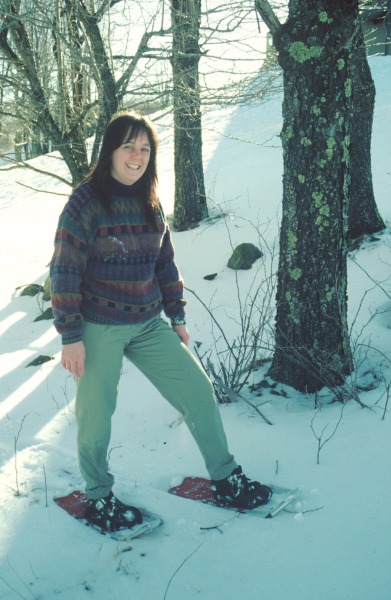 Deerfield Nature Park is a beautiful 591-acre park located seven miles west of Mt. Pleasant. The park has eight miles of groomed trails and provides a variety of winter activities for outdoor enthusiasts.
Deerfield Nature Park is a beautiful 591-acre park located seven miles west of Mt. Pleasant. The park has eight miles of groomed trails and provides a variety of winter activities for outdoor enthusiasts.
Also in Isabella County, the Pere Marquette Rail Trail, located along Business US 10, connects to the Midland County section of this popular mid-Michigan rail-trail. The trail is not plowed in the wintertime, thus allowing non-motorized winter recreation activities for persons who enjoy skiing and snowshoeing.
Wilderness Valley Trails, nestled in hardwood hills southwest of the town of Gaylord, features 35 miles of snowshoeing paths.
The Upper Peninsula is wilderness central for Michigan and you’re in the heart of it when you step into snowshoes here. Within Porcupine Mountains Wilderness State Park’s 58,000 acres, west of Ontonagon, Michigan, there are 26 miles of trails that are ideal for snowshoe wandering.
Other places where I recommend snowshoeing in Michigan include the Rose Lake Wildlife Research Area outside Laingsburg, Sleeping Bear Dunes National Lakeshore, Oden Island near Petoskey, the Highland Recreation Area, Highland, Michigan, and the Fenner Nature Center, close by Lansing. Also, snowshoers head for The Grand Traverse Commons Natural Area near Traverse City and the Michigan Legacy Art Park, an outdoor sculpture facility on Crystal Mountain in Thompsonville, Michigan.
Fun, exciting and the perfect way to enjoy a winter’s outing are the kinds of imagery often expressed by Michigan snowshoeing enthusiasts. As author Bill Osmond observes in The Snowshoe Book: “There is something in snowshoeing’s simplicity and closeness to nature that speaks directly to an increasing number of people who seek to live with nature, rather than subdue it.”
Snowshoers can go virtually anywhere. And that, snowshoers agree, is the real beauty of their sport. It is an ideal way to enjoy winter. There’s no expensive equipment to purchase—a person just goes out and bushwhacks.
The study of countless small tracks in the snow is an interesting part of the winter scene. The chance acquaintance you make with winter birds and other animals often prove a delightful accompaniment to a day’s outing. Through it all is the timeless beauty of the Michigan landscape and the endless thrill of snowshoe wandering. Enjoy, but please exercise prudence.

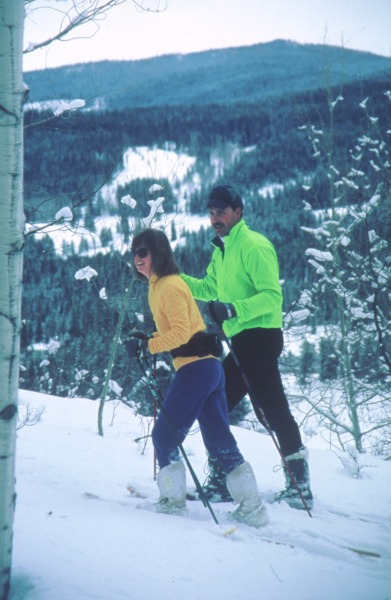
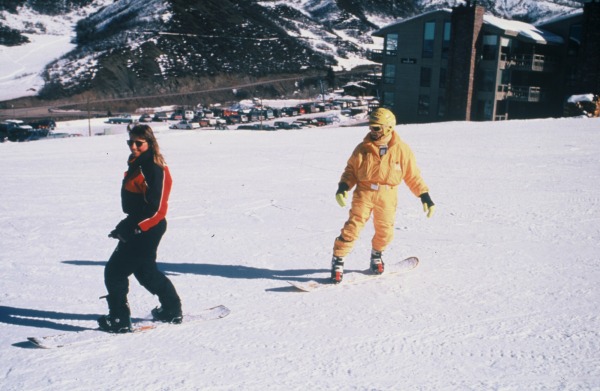
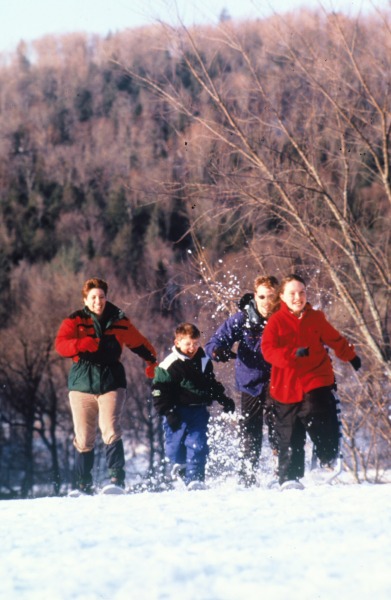
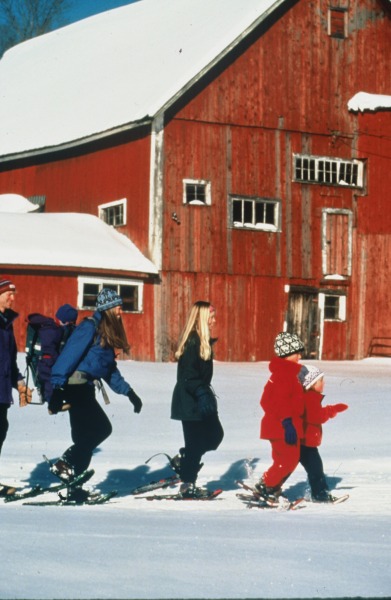
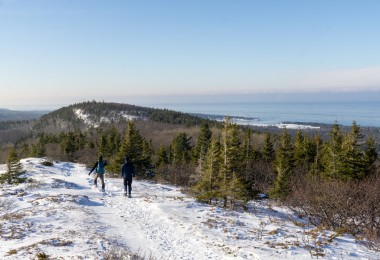
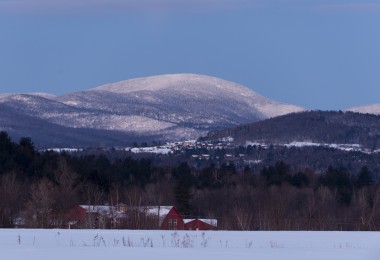
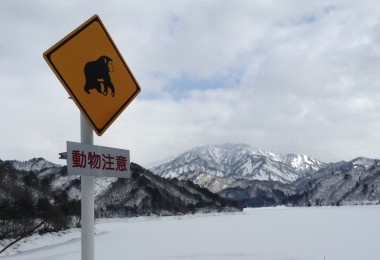
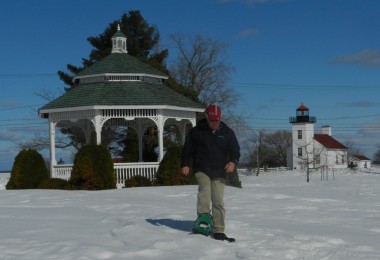

[…] Related News: Bigfootin'. It Around Michigan If the land is rough or the woods thick, you need a short, broad 'shoe. If it's open and smooth, a long, narrow snowshoe works better. When snow is light and soft, you'll need a larger size than when it's hard and dry. When a day's outing requires … Read more on Snowshoe Magazine […]